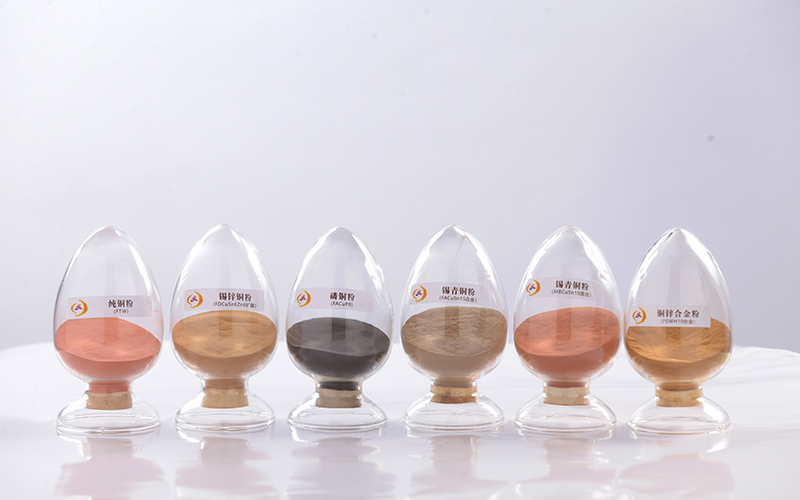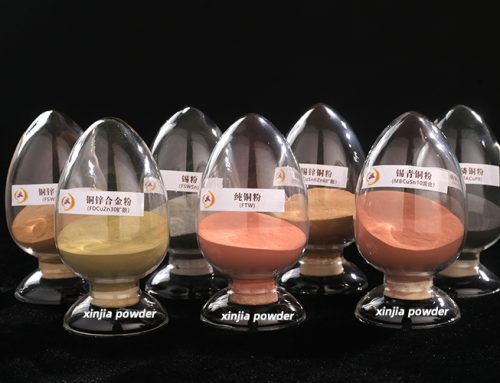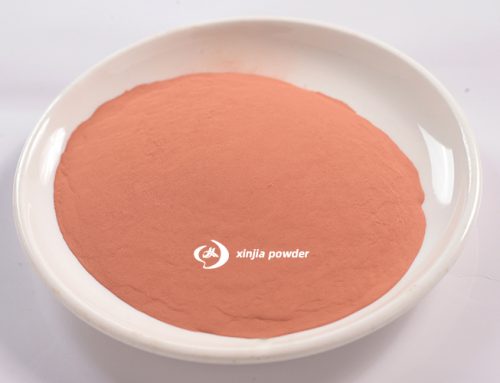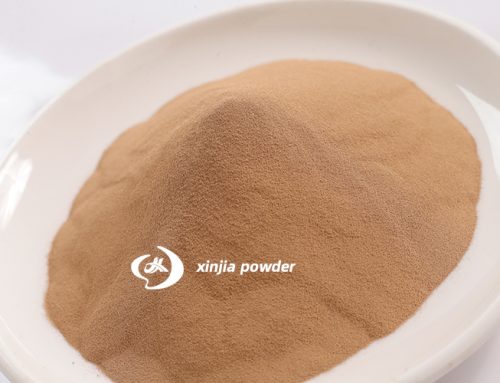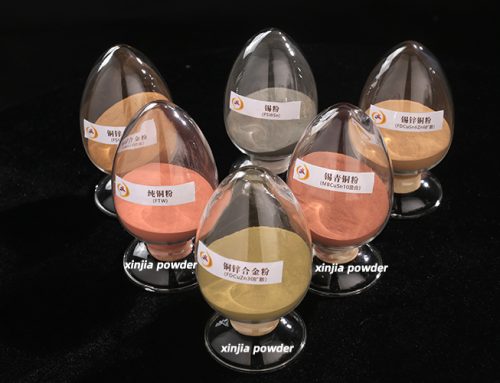The physical properties of pure copper in massive form are given in Table 3. Outstanding are the electrical and thermal conductivities which are markedly higher than those of any other base metal and are exceeded only by silver. A copper powder with a purity exceeding 99.95% is available, and, of course, the individual particles have the same properties as massive copper. However, it is impractical to achieve a density of 8.94 g/cm 1 by pressing and sintering alone, and, therefore, the properties of P/M parts are influenced by the density attained. Densification can be increased by additional operations such as double pressing-double sintering or forging, for example, and the properties of the P/M part approach those of the massive metal as a limit.
Pure Copper P/M PartsBronze P/M PartsBrass And Nickel Silver P/M PartsCopper-Nickel P/M MaterialsCopper-Lead And Copper-Lead-Tin P/M MaterialsDispersion-Strengthened P/M MaterialsP/M Friction MaterialsCopper-Tungsten P/M Materials
Physical Properties of Massive (Fully Dense) Copper
| English Units | C.G.S. Units | |
| Melting Point | 1981 F | 1083 C |
| Density | 0.323 lb/in 3 @ 68 F | 8.94 g/cm, 3 @ 20 C |
| Coef. Thermal Expansion | 9.4 x 10 6 /F (68-212 F) | 17.0 x 10 6 /C (20-100 C) |
| Thermal Conductivity | 226 Btu/ft 2/ft/hr/F@ 68 F | 0.934 cal/cm 2/cm/sec/C @ 20 C |
| Electrical Resistivity | 10.3 ohms (circ mil/ft)@ 68 F | 1.71 microhm-cm @ 20 C |
| Electrical Conductivity* | 101% IACS @ 68 F | 0.586 megmho-cm @ 20 C |
| Specific Heat | 0.092 Btu/lb/F @ 68 F | 0.092 cal/g/C @ 20 C |
| Modulus of Elasticity (Tension) | 17,000 ksi | 117,000 MPa |
| Modulus of Rigidity | 6,400 ksi | 44,000 MPa |
| * Volume BasisSource: Standards Handbook, Part 2, Alloy Data. New York, Copper Development Association Inc., 1973. | ||
The final sintered density has a significant effect on the conductivity of a P/M product. Conductivity is directly affected by porosity; the greater the void content, the lower the conductivity. Since the conductivity of a pore is zero, the relationship between porosity and conductivity is given by the equation: 2
K = K s(1-f)
where K = thermal or electrical conductivity of the P/M part
K s = intrinsic thermal or electrical conductivity of the massive metal
f = fractional porosity
As pressed and sintered, the electrical conductivity of pure copper parts can range from 80% to 90% IACS and higher conductivities can be achieved by additional working of the parts. The effect of sintered density on the electrical conductivity and mechanical properties of sintered copper is indicated in Figure 5.
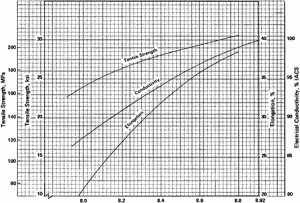
charactistics-properties
The high electrical conductivity and excellent ductility that can be achieved in copper P/M compacts lead to the selection of pure copper powder for P/M parts for electronic and electrical applications where conductivity is essential. Such parts include commutator rings, contacts, shading coils, nose cones and twist type electrical plugs. A specific application is a diode used as the base of the silicon rectifier for the alternator charging systems in automobiles.
Copper powders are used in copper-graphite compositions, which have low contact resistance, high current-carrying capacity and high thermal conductivity for brushes in motors and generators and as moving parts of rheostats, switches and current-carrying washers. These powders are also used to produce electrode tools for electrical discharge machining of complex dies. Copper powder is selected for its high electrical and thermal conductivity.
Pure copper is also used in nonelectrical P/M applications. An interesting example is a copper blade shank which is impregnated with grease to increase the service life of a pocket knife.

